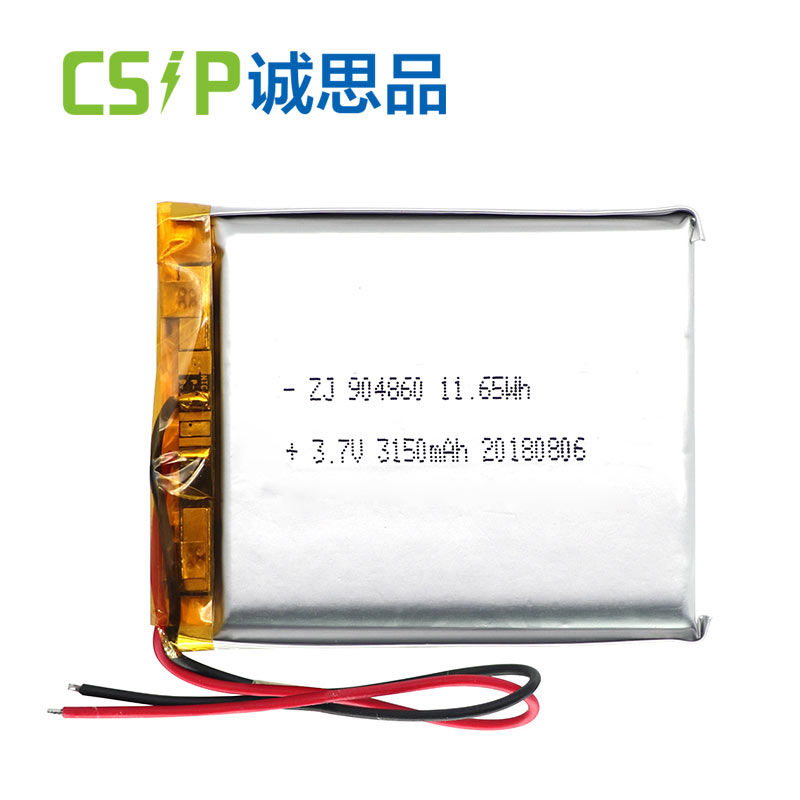1. Different electrolytes

Li-ion batteries use a liquid electrolyte. Li- polymer Li- ion polymer batteries polymer is used in gel liquid organic detergents, or directly with all solid electrolytes. Graphite- suchlike carbon is generally used as the negative electrode in Li- ion batteries.
2.Different parcels.

Compared with liquid lithium- ion batteries, lithium- ion polymer batteries aren't only safe, but also have the advantages of small size, arbitrary area and arbitrary shape. The covering also uses a lighter aluminium- plastic compound film. still, its low temperature discharge performance still needs to be bettered.
3.Different process costs.

The liquid lithium battery force chain is mature, the process is mature, the product effectiveness is high, the affair is high, and it has a strong manufacturing cost advantage. From the request point of view, although the capacity of 5 mm and 6 mm thick series of liquid lithium batteries is much advanced than that of 3 mm and 4 mm thick series, the price is much lower.
Theoretically, the polymer material costs for the 5 mm and 6 mm consistence specifications are close to those of liquids, but the process costs for the 5 mm and 6 mm series cells are much advanced than those of liquids. thus, there's still a long way to go to contend with liquids in this specification.
Liquid Li- ion batteries and polymer Li- ion batteries are two types of Li-ion batteries that are produced in high volumes. So in numerous cases a battery labelled lithium ion must be a lithium ion battery. But it does not have to be a liquid lithium- ion battery, it could be a polymer lithium- ion battery. Lithium- ion batteries are an advanced product of lithium batteries.

Lithium batteries have been around for a long time, but lithium is a largely reactive essence. It isn't safe to use. It frequently burns and bursts when charged. latterly, there was an advanced lithium- ion battery that incorporated factors that inhibited the exertion of lithium( similar as cobalt and manganese), making lithium batteries truly safe, effective and accessible.
The old lithium batteries were also largely excluded. As for how to distinguish them, they can be linked by the battery's totem. Lithium batteries are lithium and lithium ion batteries are lithium ion. currently, the so- called" lithium batteries" used in laptops and mobile phones are actually lithium- ion batteries. The introductory structure of a ultramodern battery consists of three corridor the positive electrode, the negative electrode and the electrolyte. The lithium- ion battery, as a battery, also has these three rudiments.
Generally, lithium- ion battery technology uses a liquid or inorganic colloidal electrolyte and thus requires a solid covering to contain the ignitable active component, which increases the weight and cost of the battery and limits the inflexibility of size and shape. In general, liquid lithium- ion secondary batteries have a minimal consistence of 6 mm, which is delicate to reduce. So- called polymer lithium- ion batteries are at least one or further of three main structures with polymer accoutrements as the primary battery system.

The new generation of polymer lithium- ion batteries have been largely polymerised and can thus be weakened( up to0.5 mm) and shaped in any shape and arbitrary shape, greatly adding the inflexibility of battery modelling and design, so they can be made in any shape and capacity according to product conditions.
At the same time, the unit energy of lithium- ion polymer batteries is 50 advanced than that of current ordinary lithium- ion batteries, and their capacity, charge and discharge characteristics, safety, operating temperature range, cycle life and environmental performance have all been greatly bettered. The liquid lithium- ion batteries presently on the request are prone to rupture of the safety stopcock and fire in the event of overcharging, which is veritably dangerous.
It's thus necessary to add protection ic circuitry to insure that the battery isn't overcharged. In the case of Li- ion polymer batteries, which have a better charge and discharge resistance than liquid Li- ion batteries, the demand for external protection ic circuitry can be relaxed meetly. In addition, in terms of charging, polymer Li- ion batteries can be charged with constant current ICs.

This reduces the waiting time vastly compared to the time needed for constant-current and constant- voltage charging of lithium- ion secondary batteries. The so- called" polymer lithium- ion battery" is in fact one of the seed families of lithium- ion batteries. In fact, its main factors the positive electrode, the negative electrode, the electrolyte and the operating principle are the same as those of a lithium- ion battery using a liquid electrolyte, but the diaphragm and packaging accoutrements are different.
So, in the final analysis, it's a lithium ion battery! Polymer lithium- ion batteries are a new type of battery with the advantages of high energy viscosity, small size, volume, light weight, high safety, long cycle life and low cost. Nokia No NiMH, Li-ion liquid or Li-ion polymer batteries.


 Home
Home CSIP
CSIP  Mar 01,2023
Mar 01,2023 
 How lithium batteries are made?-CSIP
How lithium batteries are made?-CSIP 
 Feb 17,2023
Feb 17,2023 








